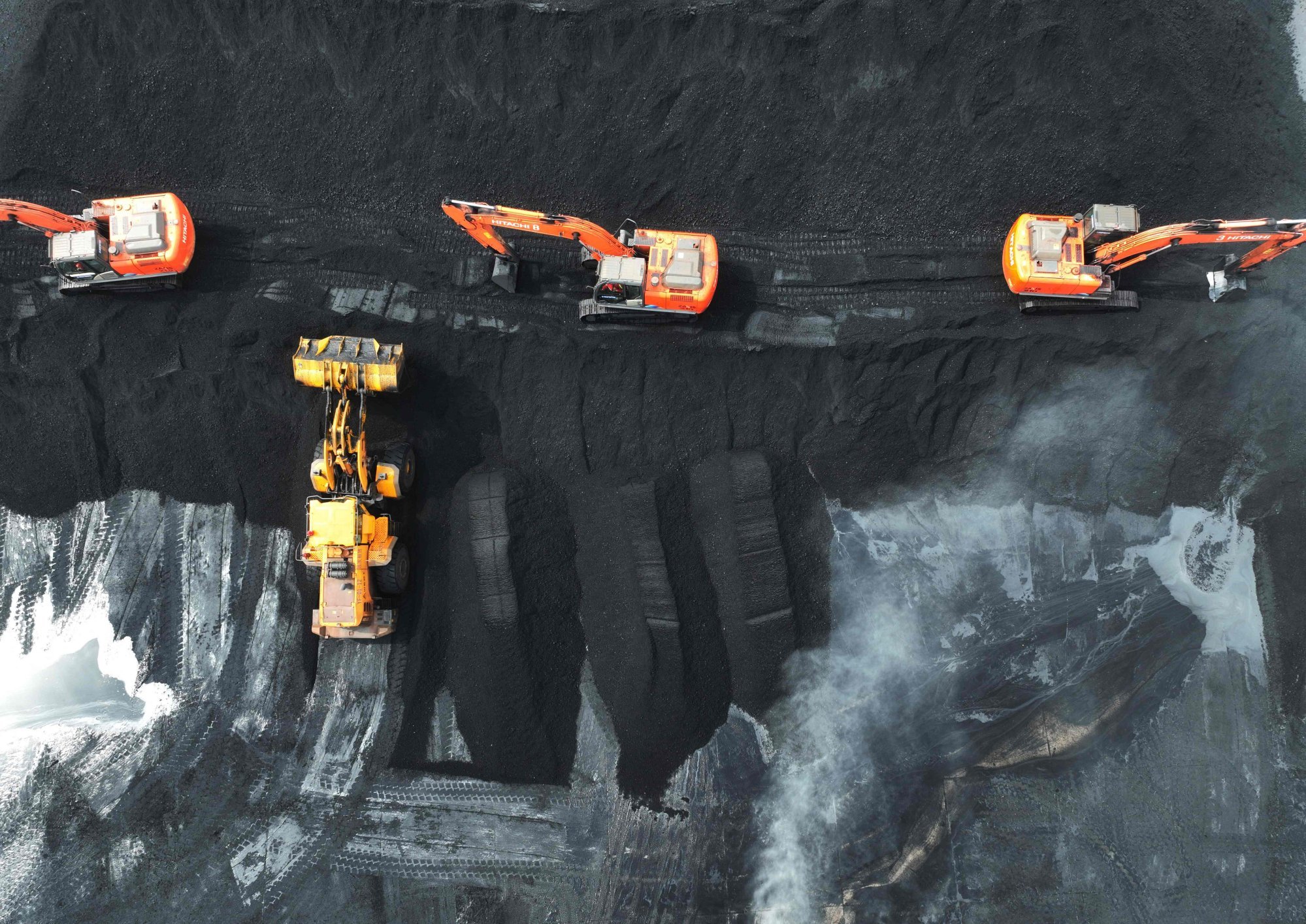(South China Morning Post) China this year has continued a coal spree that started in the summer of 2022, approving more permits for new coal plants, commissioning newly built plants and even bringing long-dormant plants back online despite the approaching 2030 deadline for the nation to reach peak carbon emissions, according to new research.
“As the world turns its back on new coal projects, China is making the path towards its energy transition and climate commitments more complicated and costly,” said Flora Champenois, research analyst at GEM and co-author of the report.
 Diggers move coal after it was unloaded from ships at the port in Lianyungang, in China’s eastern Jiangsu province, on July 12, 2023. Photo: AFP
Diggers move coal after it was unloaded from ships at the port in Lianyungang, in China’s eastern Jiangsu province, on July 12, 2023. Photo: AFP
From January to June, construction started on 37GW of new coal power capacity, while 41GW of new projects were announced and in the queue for government approval. Meanwhile, China for the first time restarted suspended projects, reviving 8GW of previously shelved coal capacity in the first half of the year, the report said.
“The coal power spree is a last-minute push by China’s coal industry to lock in capacity and emissions before China’s [carbon dioxide] emissions are due to peak late this decade,” said Lauri Myllyvirta, lead analyst at CREA and co-author of the report. “This is happening even as clean energy installations are rapidly expanding.”
Most of the new projects do not meet the central government’s stated requirements for permitting, and the provinces building the most new coal capacity are not using it to support a correspondingly large buildout of clean energy, the report said. Most of the projects are in provinces that have no shortage of generating capacity to meet demand peaks, the authors said.
New coal project activity accelerated most dramatically in the coastal provinces of Jiangsu, Shandong and Hebei, and in the inland provinces of Inner Mongolia, Shaanxi and Gansu, according to the report. Guangdong, which led the charge in 2022, continued initiating and permitting more new projects than any other province, the report showed.






